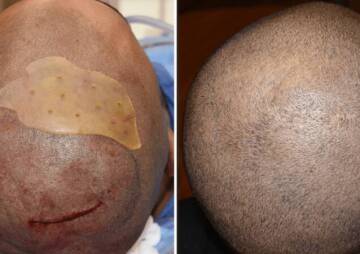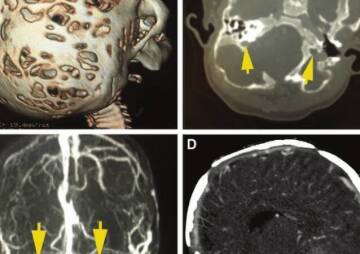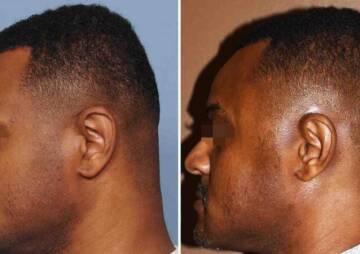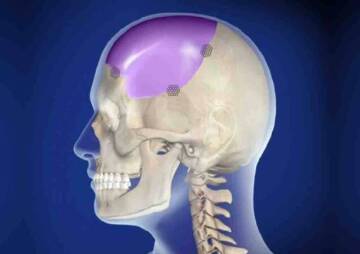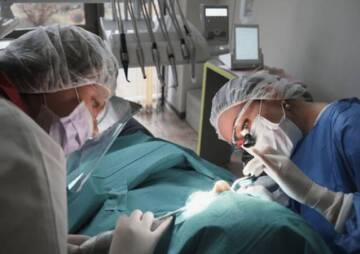-
Category
Craniomaxillofacial Surgery
Orthopedic Surgery
Spine Surgery
Orthopedic Implants
Hip Surgery
Knee Surgery
Pectus Excavatum
Bone Graft
Disinfectants
Healthcare
The Application of Custom Skull Implant

Custom skull implants are useful tools for reforming and improving the deformity of skull. A patient who suffers from deformity of skull due to Occipital plagiocephaly, genetic disorders tumor, trauma or infection could use skull implant.
Custom skull implants are useful tools for reforming and improving the deformity of skull. A patient who suffers from deformity of skull due to Occipital plagiocephaly, genetic disorders tumor, trauma or infection could use skull implant. Skull reconstruction involves restoring not just the bone defect but also muscle, fat and skin defects to establish a more normal structure and appearance.
The goals of craniofacial reconstruction are to establish normal function of the skull in appearance with lower risk of complications. One area of interest is in establishing normal bone contour. This can be done with several methods such as bone graft, bone substitute and custom implants. For very large skull defects, a custom-made skull implant can be created and placed directly over the brain for protection and reconstruction of the skull. Typically, these implants are made out of synthetic material. It is recommended to use 3D CT skull scans to help create the custom implant.
Cranial soft tissue defects can be reconstructed with several different options, such as fat grafting and vascularized free tissue transfer, to restore volume to the face and, more commonly, the temporal hollowing that occurs. The temporal area is located behind the orbit (eye socket) on the side of the skull just above the ear. The temporalis muscle, which pulls on the mandible to close the mouth, is typically detached during emergency neurosurgery and retracts over time, causing bulging over the cheekbones. This can be seen as fullness just in front of the ear and hollowing or depression just above the bulging along the temporal area of the skull. The extent of the deformity will determine the type of technique used to reconstruct the temporal hollowing.
Some people request fat grafting; however, this is not ideal for large defects or over an implant. Creating a customized silicone implant to simulate the temporalis muscle is possible. Sometimes these implants may need to be changed out in the future, requiring another operation. If a custom skull implant has already been inserted, then vascularized tissue is the best option in these cases, as it will prevent future infection and complications. Vascularized free soft tissue transfer can be harvested from the thigh or back then blood vessels reconnected using a microscope to help reconstruct the soft tissue covering the skull deformity and or implant.
Here we discuss two reasons for using custom skull implants: Occipital plagiocephaly and genetic disorder
Using custom skull implants due to genetic disorder
The height of the head can be an important aesthetic issue for some women. Flat or low skull height over the crown area can be seen as an undesirable physical feature. Women will often try to camouflage the lack of crown height by altering their hairstyle with ‘hair heightening’. While this can be effective, it is time consuming and tedious. And not all women have enough hair density to do this adequately.
A surgical and invasive method to create a partial Bumpit effect is the use of a custom skull implant. As a one stage procedure it may allow in some cases for the crown skull height to be augmented from 8 to 12mms. (which is roughly half of the typical Bumpit height of about 25mms) But its effects cover a broader surface area of the skull to blend into the sides of the head with a smooth tapered transition.
Semi-Custom Skull Implant for Occipital Plagiocephaly
Occipital plagiocephaly is a well-recognized skull shape deformity that is caused by deformational forces. Whether this is the result of intrauterine constraint, post-delivery head positioning or both, the thin and malleable skull bones are prone to be inadvertently molded into a deformed shape. This classically appears as a flatness on one side of the back of the head with some protrusion of the opposite side and a well described entire craniofacial scoliosis of varying degrees.
While cranial molding helmets can be very effective at the treatment of deformational occipital plagiocephaly, their effectiveness diminishes after 12 to 18 months of age. Once this non-surgical treatment window has passed, surgery is the only effective treatment. But the concept of surgically taking off the entire back of the head and reconstructing it can be too invasive for many patients and is only appropriate in the most severe occipital flattening cases. As an adult, however, bony reconstruction is not an option given the thickness of the skull bones and the sheer magnitude and risks of major skull reshaping surgery.
Flatness of the back of the head in adults is an often unrecognized aesthetic concern. But to the patient so affected it is well recognized with many maneuvers done to camouflage it from hair styles to hats. Correction of a unilateral occipital plagiocephaly in adults is most effectively and simply done using an orthopedic implant that is placed on the bone. This type of occipital implant can be done using either custom or semi-custom designs. The surgery to place them remains the same regardless of how the implant is made.
Highlights:
Unilateral occipital plagiocephaly can be effectively treated as an adult by the placement of an implant for skull reshaping/augmentation.
Unilateral occipital implants can be custom made or a semi-custom type implant can be used.
An occipital implant for a flatness on one side of the back of the head is placed through a low occipital hairline incision.
